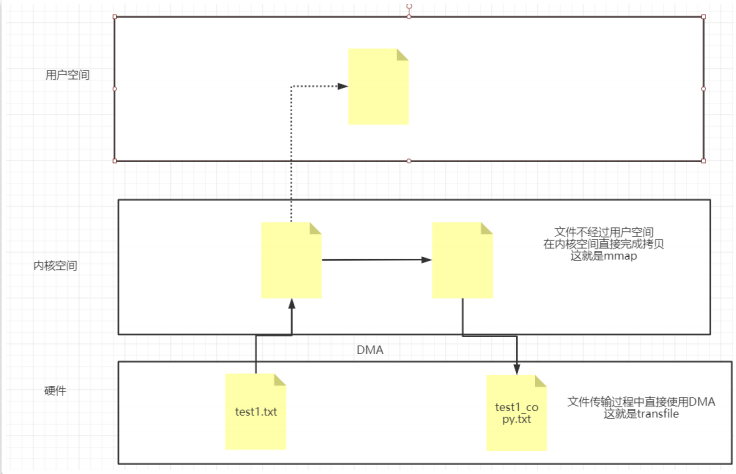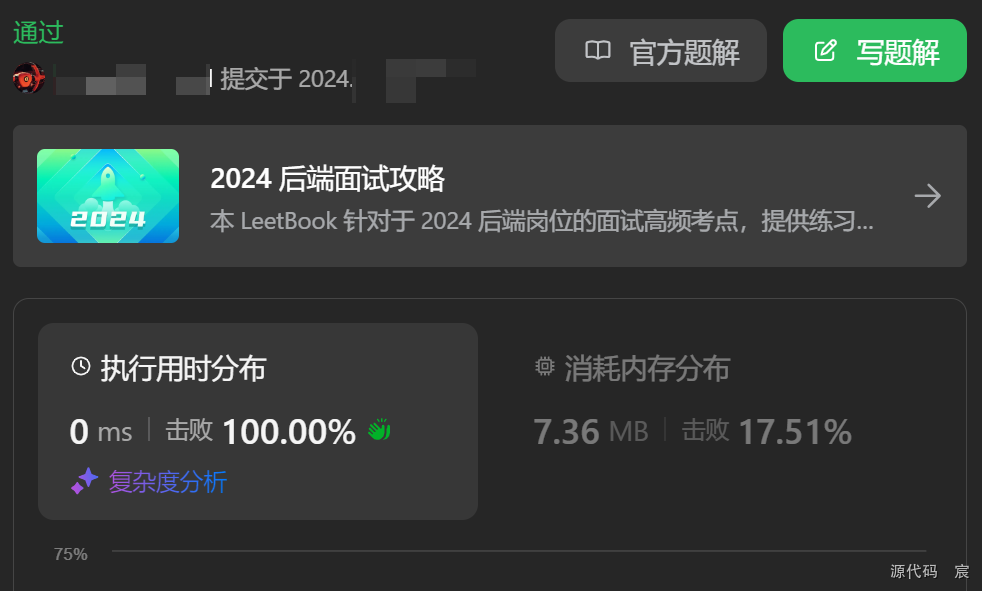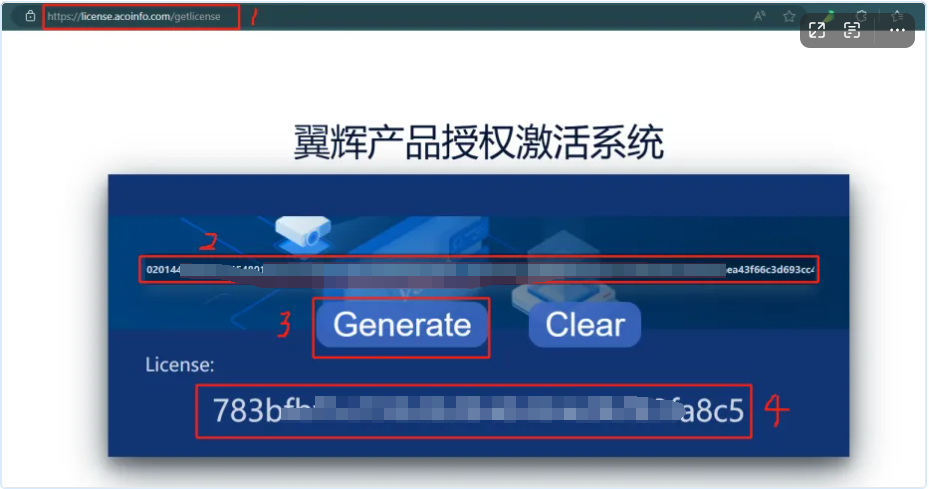栈&队列-OJ
1.给定一个只包括 '(',')','{','}','[',']' 的字符串 s ,判断字符串是否有效。
有效字符串需满足:
(1).左括号必须用相同类型的右括号闭合。
(2).左括号必须以正确的顺序闭合。
(3).每个右括号都有一个对应的相同类型的左括号。
//1.栈和队列OJ题:括号匹配问题
#define _CRT_SECURE_NO_WARNINGS 1
#include <stdio.h>
#include <stdbool.h>
#include <assert.h>
#include <stdlib.h>
typedef char STDataType;
typedef struct Stack
{
STDataType* a;
int top;
int capacity;
}ST;
void StackInit(ST* ps);
void StackDestory(ST* ps);
void StackPush(ST* ps, STDataType x);// 入栈
void StackPop(ST* ps);// 出栈
STDataType StackTop(ST* ps);
int StackSize(ST* ps);
bool StackEmpty(ST* ps);
void StackInit(ST* ps)
{
assert(ps);
ps->a = (STDataType*)malloc(sizeof(STDataType) * 4);
if (ps->a == NULL)
{
printf("malloc fail\n");
exit(-1);
}
ps->capacity = 4;
ps->top = 0;
}
void StackDestory(ST* ps)
{
assert(ps);
free(ps->a);
ps->a = NULL;
ps->top = ps->capacity = 0;
}
// 入栈
void StackPush(ST* ps, STDataType x)
{
assert(ps);
if (ps->top == ps->capacity)//判断空间是否够用,不够就要增容
{
STDataType* tmp = (STDataType*)realloc(ps->a, ps->capacity * 2 * sizeof(STDataType));
if (tmp == NULL)
{
printf("realloc fail\n");
exit(-1);
}
else
{
ps->a = tmp;
ps->capacity *= 2;
}
}
ps->a[ps->top] = x;
ps->top++;
}
// 出栈
void StackPop(ST* ps)
{
assert(ps);
// 栈空了,调用Pop,直接中止程序报错
assert(ps->top > 0);
//ps->a[ps->top - 1] = 0;
ps->top--;
}
STDataType StackTop(ST* ps)
{
assert(ps);
// 栈空了,调用Top,直接中止程序报错
assert(ps->top > 0);
return ps->a[ps->top - 1];
}
int StackSize(ST* ps)
{
assert(ps);
return ps->top;
}
bool StackEmpty(ST* ps)
{
assert(ps);
return ps->top == 0;
}
bool isValid(char* s)//判断符号
{
if (*s == ')' || *s == '}' || *s == ']')
{
return false;//匹配失败
}
//struct Stack st; //上面对struct Stack进行了重命名(line11) typedef struct Stack ST
ST st;//创建 栈
StackInit(&st);
while (*s != '\0')
{
switch (*s)
{
case '(':
case '{':
case '[':
{
StackPush(&st, *s);
s++;
break;
}
case ')':
case '}':
case ']':
{
if (StackEmpty(&st))
{
StackDestory(&st);
return false;
}
char top = StackTop(&st);
StackPop(&st);
if (top != '(' && *s == ')'
|| top != '{' && *s == '}'
|| top != '[' && *s == ']')
{
StackDestory(&st);
return false;//匹配失败
}
else
{
s++;
break;
}
}
default:
break;
}
}
bool over = StackEmpty(&st);
StackDestory(&st);
return over;
}
bool isValid0(char* s) {
ST st;
StackInit(&st);
while (*s != '\0')
{
switch (*s)
{
case '{':
case '[':
case '(':
{
StackPush(&st, *s);
++s;
break;
}
case '}':
case ']':
case ')':
{
if (StackEmpty(&st))
{
StackDestory(&st);
return false;
}
char top = StackTop(&st);
StackPop(&st);
// 不匹配
if ((*s == '}' && top != '{')
|| (*s == ']' && top != '[')
|| (*s == ')' && top != '('))
{
StackDestory(&st);
return false;
}
else // 匹配
{
++s;
}
break;
}
default:
break;
}
}
bool ret = StackEmpty(&st);
StackDestory(&st);
return ret;
}
int main()
{
printf("%d\n", isValid("))"));
printf("%d\n", isValid("(){}[]"));
return 0;
}
2.请你仅使用两个队列实现一个后入先出(LIFO)的栈,并支持普通栈的全部四种操作(push、top、pop 和 empty)。
实现
MyStack类:
void push(int x)将元素 x 压入栈顶。int pop()移除并返回栈顶元素。int top()返回栈顶元素。boolean empty()如果栈是空的,返回true;否则,返回false。
//2.栈和队列OJ题:用队列实现栈
#define _CRT_SECURE_NO_WARNINGS 1
#include <stdio.h>
#include <stdlib.h>
#include <assert.h>
#include <stdbool.h>
typedef int QDataType;
typedef struct QueueNode
{
QDataType data;
struct QueueNode* next;
}QNode;
typedef struct Queue
{
QNode* head;
QNode* tail;
}Queue;
void QueueInit(Queue* pq)//初始化队列
{
assert(pq);
pq->head = pq->tail = NULL;
}
void QueueDestory(Queue* pq)//销毁队列
{
assert(pq);
QNode *cur= pq->head;
while (cur)
{
QNode* temp = cur->next;
free(cur);
cur = temp;
}
pq->head = pq->tail = NULL;
}
void PrintQueue(Queue* pq)//打印队列数据
{
assert(pq);
QNode* cur = pq->head;
while (cur)
{
printf("%d ", cur->data);
cur = cur->next;
}
printf("\n");
}
QNode* Buynode(QDataType x)//申请节点
{
QNode* newnode = (QNode*)malloc(sizeof(QNode));
if (newnode == NULL)
{
perror("malloc fail");
exit(1);
}
newnode->data = x;
newnode->next = NULL;
}
void QueuePush(Queue* pq, QDataType x)//队尾插入数据(队尾进)
{
assert(pq);
if (pq->head == NULL)
{
pq->head = pq->tail = Buynode(x);
}
else
{
pq->tail->next = Buynode(x);
pq->tail = pq->tail->next;
}
}
void QueuePop(Queue* pq)//队头删除数据(队头出)
{
assert(pq);
if (pq->head == pq->tail)
{
free(pq->head);
pq->head = pq->tail=NULL;
}
else
{
QNode* temp = pq->head->next;
free(pq->head);
pq->head = temp;
}
}
bool QueueEmpty(Queue* pq)//判断队列是否为空
{
assert(pq);
return pq->head == NULL;
}
size_t QueueSize(Queue* pq)//队列的长度
{
assert(pq);
size_t size = 0;
QNode* cur = pq->head;
while (cur)
{
size++;
cur = cur->next;
}
return size;
}
QDataType QueueFront(Queue* pq)//输出队头的数据值
{
assert(pq);
assert(pq->head);
return pq->head->data;
}
QDataType QueueBack(Queue* pq)//输出队尾的数据值
{
assert(pq);
assert(pq->tail);
return pq->tail->data;
}
typedef struct
{
Queue q1;
Queue q2;
}MyStack;
MyStack* myStackCreate()//创建一个栈
{
MyStack* ps = (MyStack*)malloc(sizeof(MyStack));
if (ps == NULL)
{
perror("malloc fail\n!");
exit(-1);
}
QueueInit(&ps->q1);
QueueInit(&ps->q2);
return ps;
}
void myStackPush(MyStack* obj, QDataType x)//(入栈)
{
if (!QueueEmpty(&obj->q1))
{
QueuePush(&obj->q1, x);
}
else
{
QueuePush(&obj->q2, x);
}
}
int myStackPop(MyStack* obj)//删除栈顶数据 (出栈)
{
//假设obj->q1 指向的队列是空的;obj->q2 指向的队列不是空的;但确定肯定一个是空的,一个非空
Queue* empty = &obj->q1;
Queue* noempty = &obj->q2;
//如果上方假设失败,进行转换,obj->q2 指向的队列是空的;obj->q1 指向的队列是非空的;
if (!QueueEmpty(&obj->q1))
{
empty = &obj->q2;
noempty = &obj->q1;
}
//数据倒换
while (QueueSize(noempty)>1)
{
QDataType head = QueueFront(noempty);
QueuePush(empty, head);
QueuePop(noempty);
}
//剩下最后一个数据了
QDataType top = QueueFront(noempty);
QueuePop(noempty);
return top;
}
QDataType myStackTop(MyStack* obj)//返回栈顶数据
{
if (!QueueEmpty(&obj->q1))
{
return QueueBack(&obj->q1);
}
else
{
return QueueBack(&obj->q2);
}
}
bool myStackEmpty(MyStack* obj)//判断栈是否为空
{
return QueueEmpty(&obj->q1) && QueueEmpty(&obj->q2);
}
void myStackFree(MyStack* obj)//栈销毁
{
QueueDestory(&obj->q1);
QueueDestory(&obj->q2);
free(obj);
obj = NULL;
}
int main()
{
MyStack* st = myStackCreate();
myStackPush(st, 1);
myStackPush(st, 2);
myStackPush(st, 3);//入栈
myStackPop(st);//出栈
printf("%d \n", myStackTop(st));//返回栈顶数据
myStackFree(st);//销毁栈
return 0;
}



















